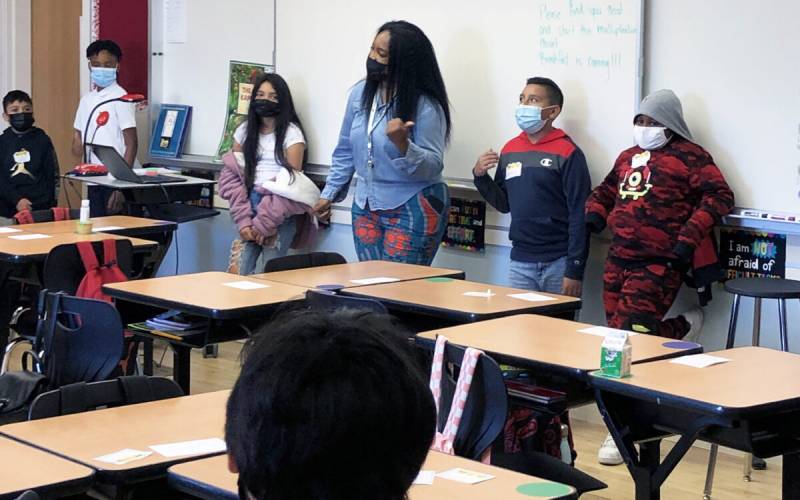Teachers will also be doing “targeted work” to help build students’ reading skills, which are often “discreet” and require one-on-one attention.
The assessments will continue at the end of each trimester to measure growth and identify whether adjustments need to be made, he said.
One of the biggest changes the school has made was switching English language arts curriculums from McGraw Hill’s Treasures — now available as Wonders — to EL Education. A major difference between the two curriculums is that EL Education has students reading high-quality books every day; whereas, the Treasures curriculum had students reading portions of books within an anthology. Each week was a new story, Allardice said, instead of “building knowledge of the world through meaningful texts and discussion.”
EL Education is open source, meaning its instruction guides are available for free online — the only cost is for printed reading material. Four other West Contra Costa Unified elementary schools also have switched to EL Education, Allardice said.
EL Education takes the “science of reading” approach, which refers to a growing body of research on how children learn to read that calls for a phonics-heavy program. Nystrom will focus its literacy program on this approach, as are a growing number of schools seeking to move away from the “whole language” strategy, which focuses on growing a child’s love for literature. The decades-old disagreement between the two camps has been referred to as the “reading wars.”
The “science of reading” approach centers on the idea that learning to read is not a natural process like learning to talk. Instead, it comes from explicitly teaching children how to connect letters and words. The ability to decode words through phonics, as well as to derive meaning from them through language comprehension, is what makes a skilled reader.
Another benefit of EL Education, Allardice said, is its “content modules,” which have students reading grade-level texts while also doing activities that help build phonics skills through classroom discussion. He said the discussion aspect is particularly important for English learners, who make up 56% of the school’s students.
“Those opportunities to use and apply language are particularly important for English learners,” Allardice said. “We are a school with a lot of English learners, and we know that creating language-rich classrooms will increase their proficiency in English and develop biliteracy."
In light of calls across the country to focus more on phonics, researchers and advocates for students who are learning English as a second language have recommended that teachers also give English learners experience reading aloud, vocabulary lessons and lots of practice speaking.
